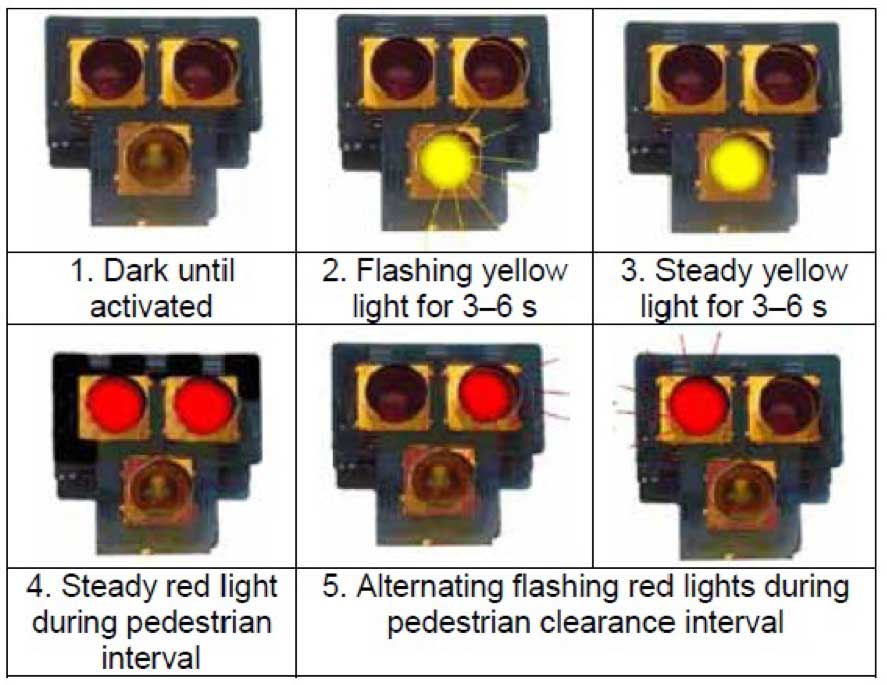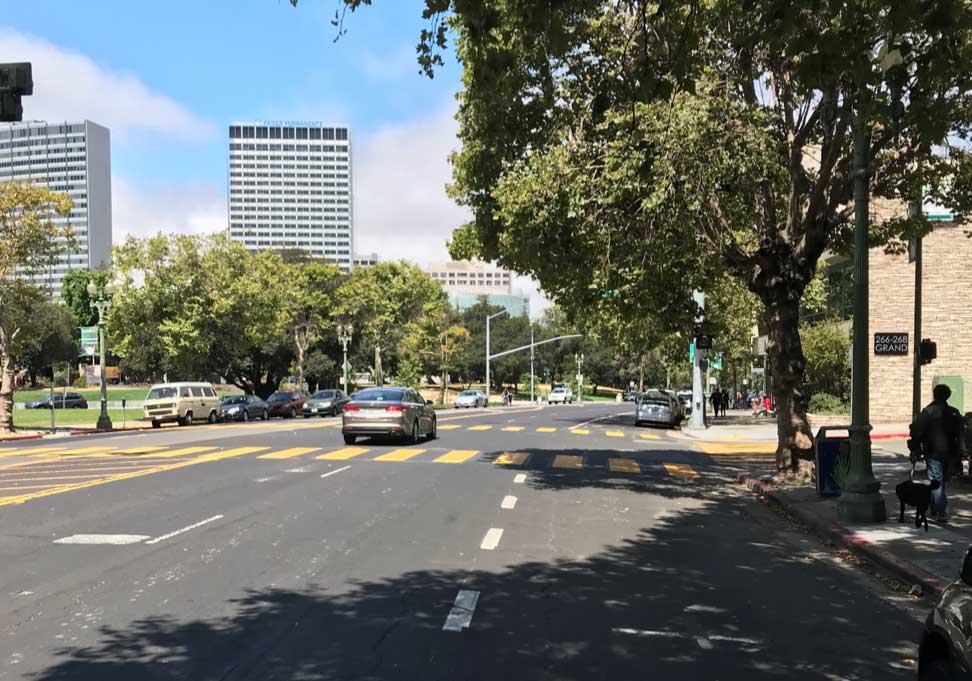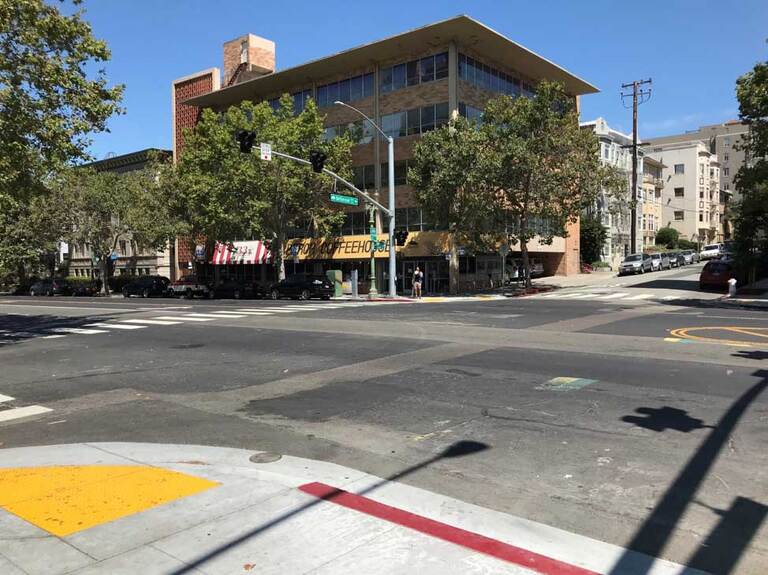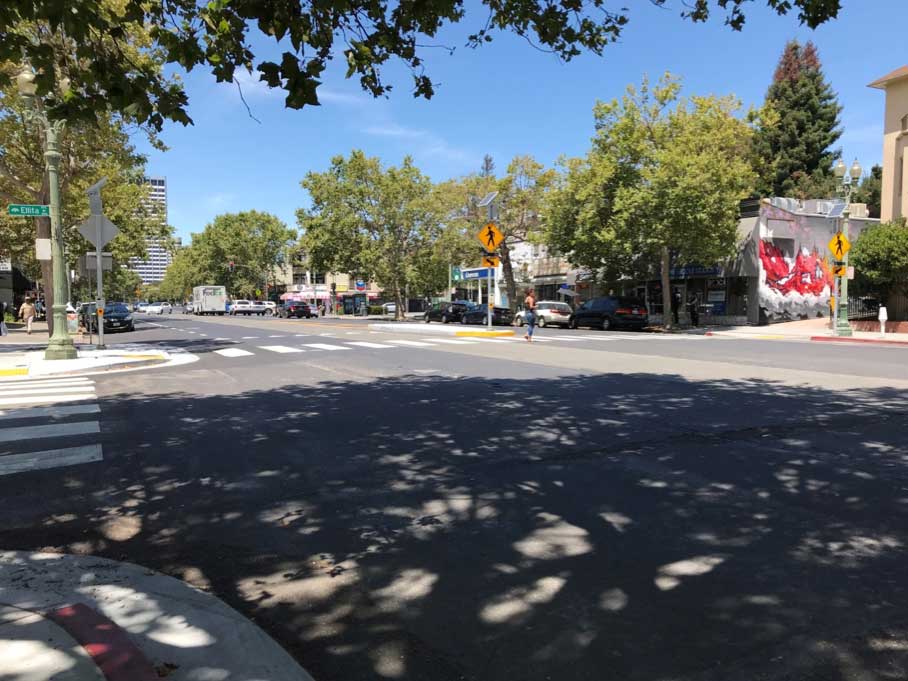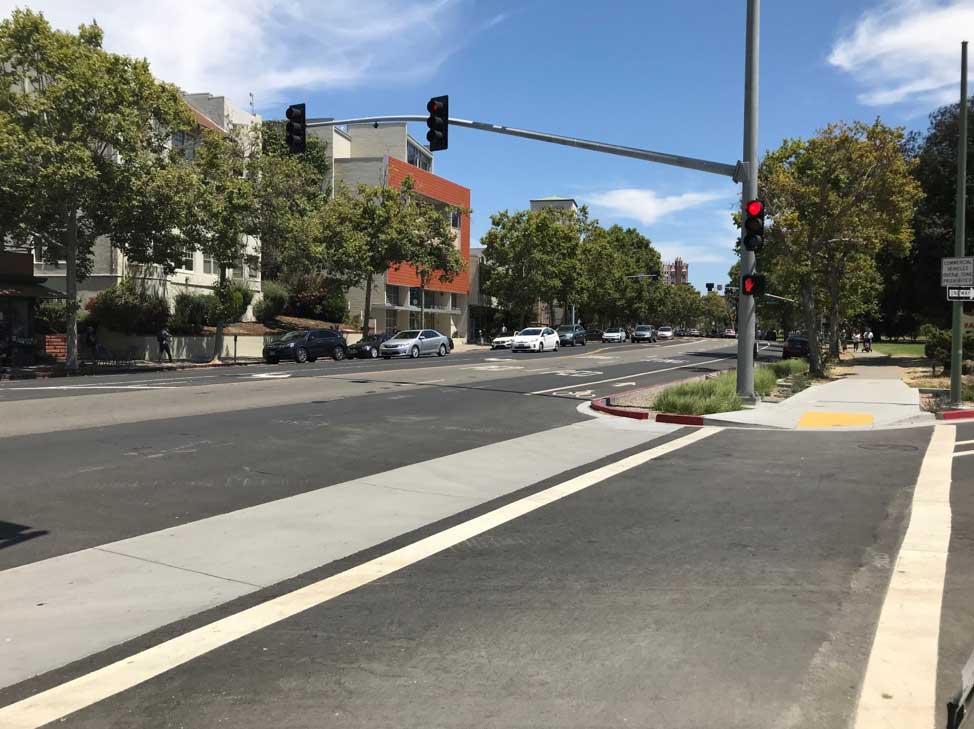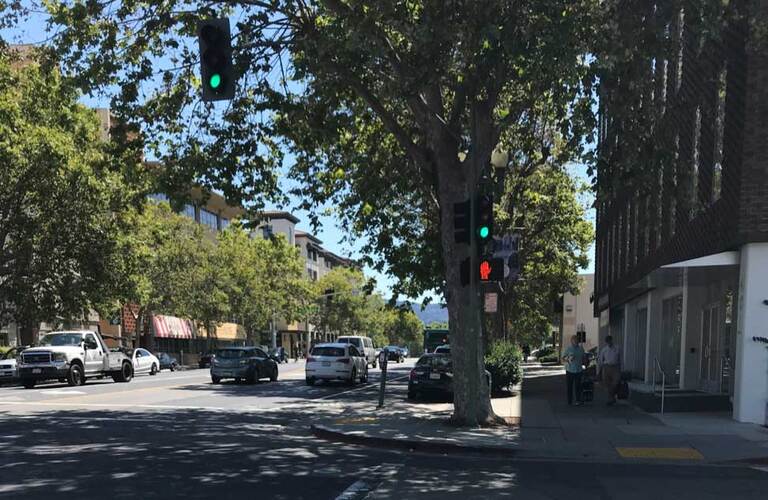Several highly-anticipated pedestrian safety improvements recently opened along Oakland’s Grand Avenue. One of the City’s high injury corridors, Grand has long served as a regional relief valve to I-580 for commuters traveling to Downtown Oakland or the Bay Bridge.
Oakland’s Pedestrian Plan designates Grand as a High-Injury Corridor: since 2013, 15 pedestrians have been injured crossing the street, including one fatality in 2013. The street’s width (four lanes plus a center left turn lane), high traffic volumes (over 23,000 vehicles a day), and fast speeds (typically exceeding the posted speed limit of 30 MPH) make it a perilous place to cross the street.
Pedestrian safety improvements were implemented at five intersections along Grand. The City installed two pedestrian hybrid beacons (also know as PHBs or HAWK signals) at the intersections of Grand/Lenox and Grand/Bellevue; two rapid-rectangular flashing beacons (RRFBs) with median refuges and bulbouts at the intersections of Grand/Lee and Grand/Elita; and curb extensions, bus stop improvements, and bioswales at the Grand/Bellevue/Park View Terrace intersection by Children’s Fairyland.
The crosswalk beacons were funded by a 2013 federal safety grant, while improvements to the Grand/Bellevue/Park View Terrace intersection were funded as a part of Measure DD.
The early results of these improvements are encouraging. Crossing at the two intersections with RRFBs RRFBs is fairly comfortable: the beacons respond immediately, visibility and yield rates are good, and the median refuges have shortened pedestrians’ exposure to traffic.
The HAWK signals also work surprisingly well: they are much more responsive to pedestrians compared to nearby traffic signals, usually changing within about ten seconds (compared to 90+ seconds at the Grand/Perkins or Grand/Staten signals during rush hour). Though some vehicles occasionally blow through the unfamiliar HAWK signals, stopping rates seem almost as reliable as traffic signals.
Though most drivers are unfamiliar with HAWK signals, stopping rates still appear pretty good at the Grand/Lennox and Grand/Bellevue intersections. Drivers must slow during the yellow light and stop during the double red light, but may proceed during the alternating flashing red lights if the crosswalk is clear. Source FHWA
That being said, the changes leave much to be desired. Though pedestrians may legally cross Grand on either side of an intersection, the City did not mark all crosswalks – a decision that is inconsistent with the neighborhood’s urban environment.
The City also neglected to trim a tree at the Grand/Lennox intersection, which obscures the visibility of the HAWK signal. Most crosswalks alongside Grand continue to be in noncompliance with the City’s pedestrian signal policy, defaulting to “Don’t Walk” phases during a green phase unless pedestrians push “beg buttons.”
The bulbouts, bioswale, and bus stop reinforce the unprotected bikeway design, posing challenges for future bikeway upgrades. Most importantly, the changes have not appeared to have measurably reduced vehicle speeds or driver perceptions of Grand as a mini-highway.
Despite the projects’ shortcomings, there is reason to be optimistic about future upgrades to Grand Avenue. OakDOT was recently awarded a grant to develop street improvement concepts to enhance transit, pedestrian, and bicycle conditions. Hopefully these improvements mark the beginning of a more visionary approach to reshaping mobility and safety on the corridor.
Photo Tour
At Grand & Lennox, the City installed a PHB accompanied by new curb ramps and crosswalks on all legs of the intersection. However, in neglecting to trim the overhanging trees or provide a left-side signal head, the PHB is only visible about one car’s length from the stop sign and poses a safety hazard. The issue has been unresolved on SeeClickFix.
At Grand & Bellevue (east), the City added another PHB accompanied by curb extensions. However, the City chose not to mark or provide directional curb ramps for the eastern crosswalk. Similar single-crosswalk conditions occur at both RRFB crossings at Grand/Lee and Grand/Staten.
At Grand & Elita, RRFBs, bulbouts, and a median refuge were installed at one crosswalk, though again the City chose not to mark or provide directional curb ramps for the eastern crosswalk. A similar design was implemented at Grand/Lee.
At Grand & Park View Terrace/Bellevue (west) adjacent to Children’s Fairyland, curb extensions substantially reduce the crossing distance across Bellevue. Again, the City chose not to mark the eastern crosswalk or provide a directional curb ramp across Grand.
Despite high pedestrian volumes, most signals along Grand continue to default to a “Don’t Walk” phase during green lights unless “beg buttons” are pushed, in noncompliance with Oakland’s pedestrian signal policy.

